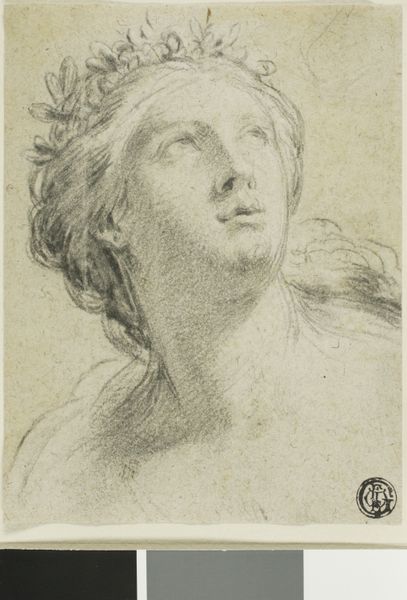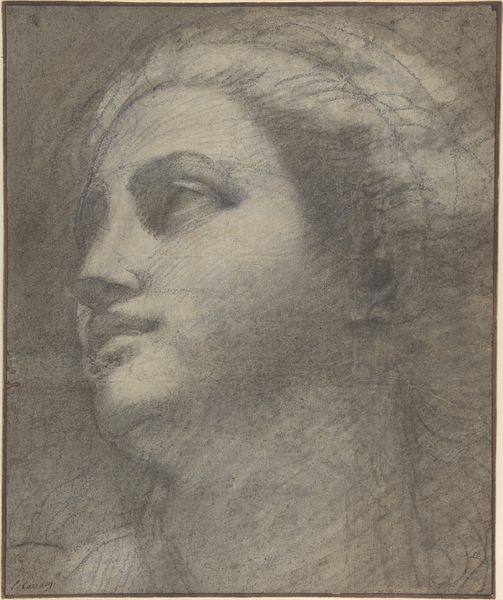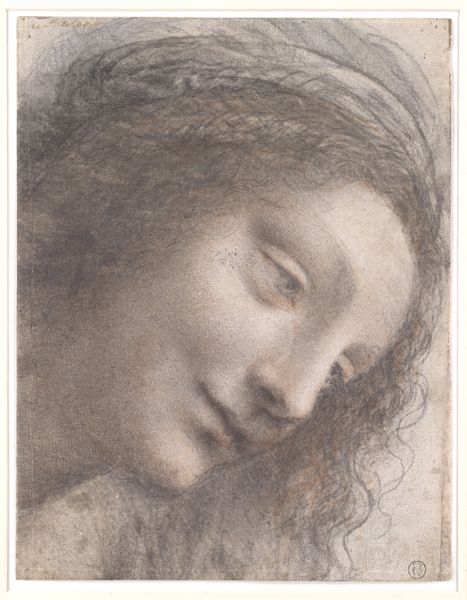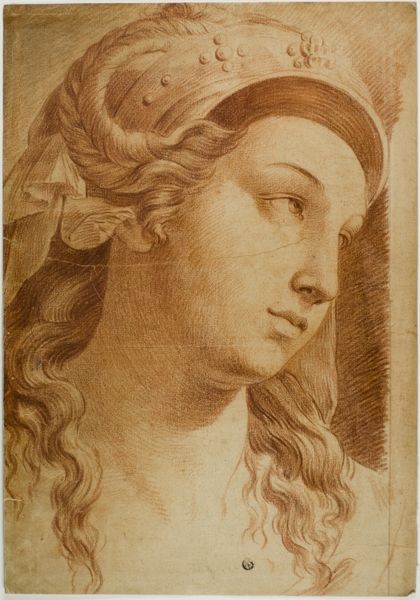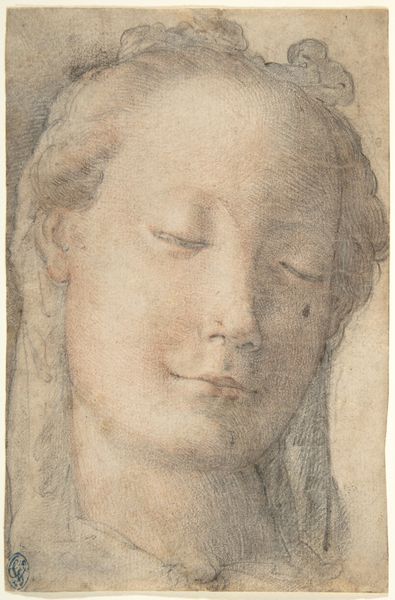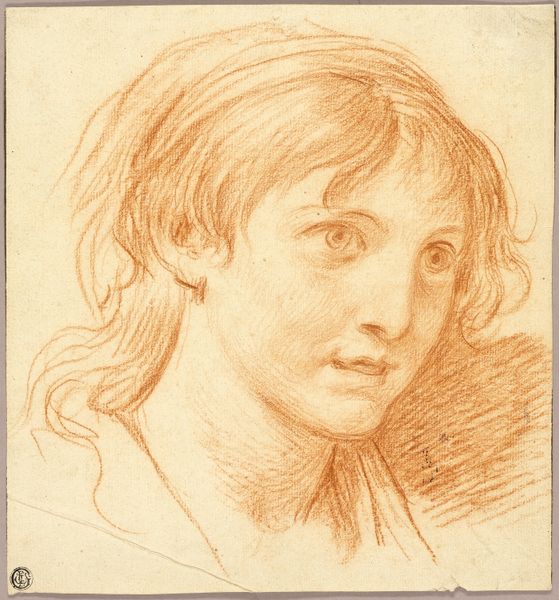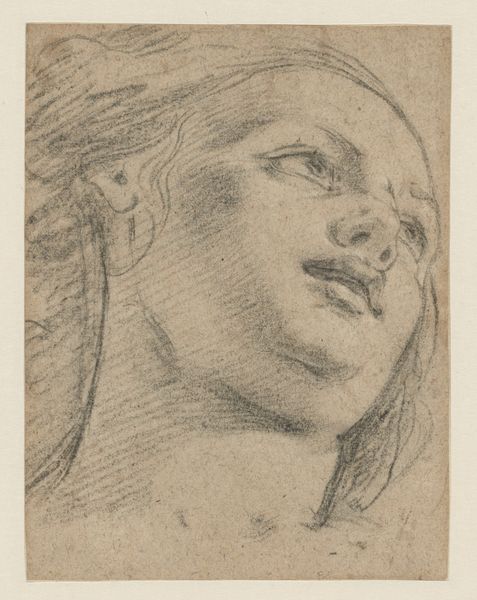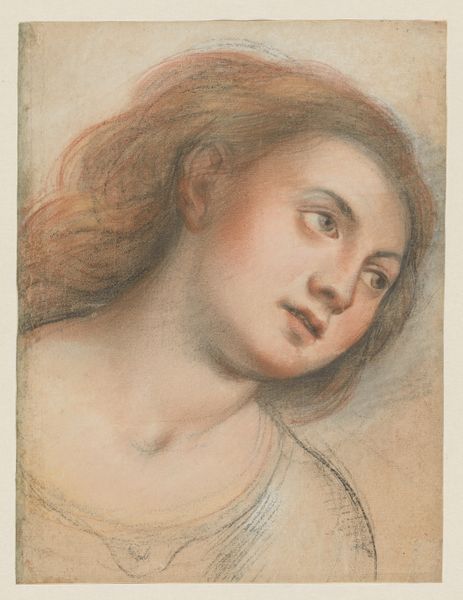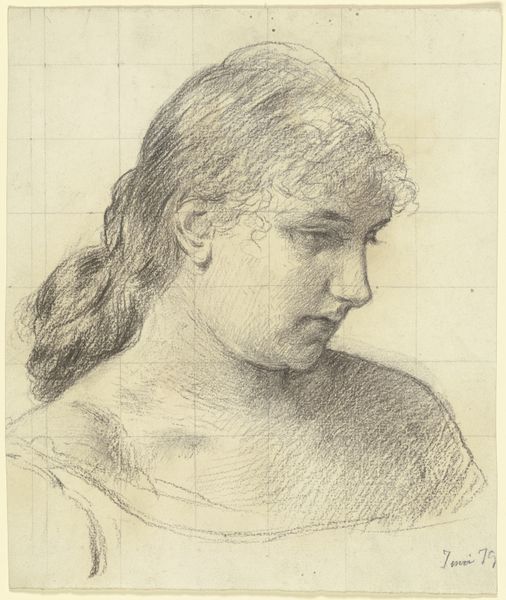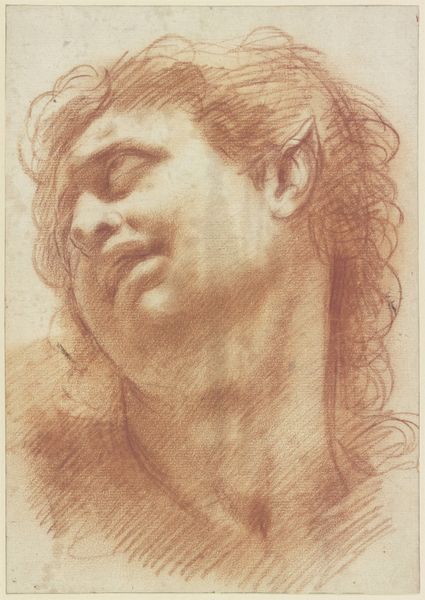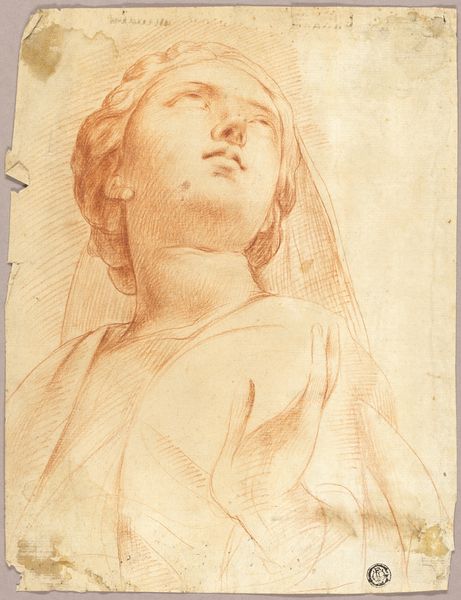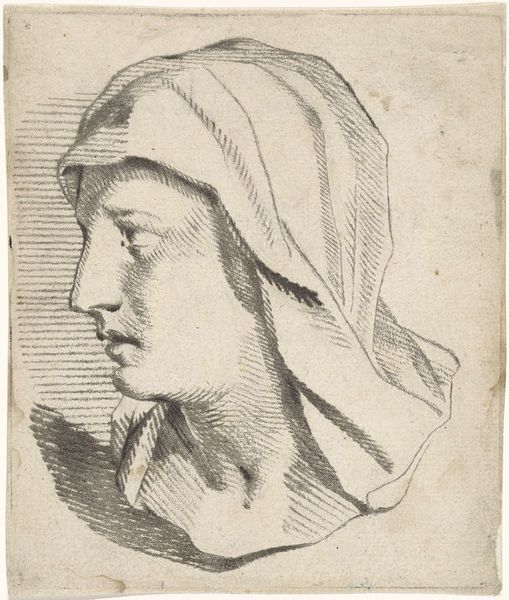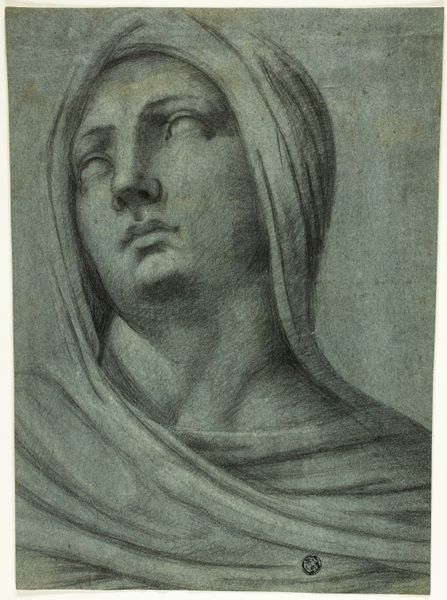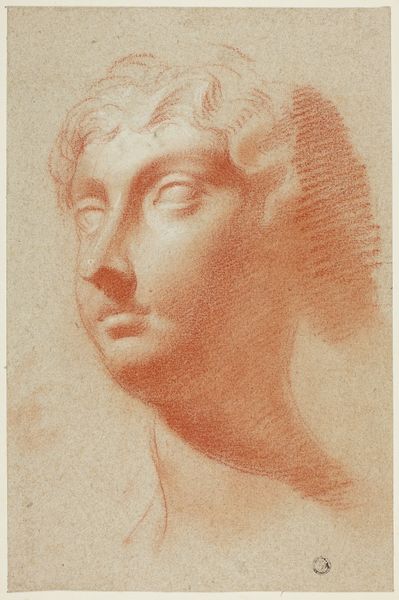
A pious woman, in bust-length, three-quarter view, with head raised to the upper right 1675 - 1725
0:00
0:00
drawing, print, pencil
#
portrait
#
drawing
# print
#
pencil
#
realism
Dimensions: 6 5/8 × 4 1/4 in. (16.8 × 10.8 cm)
Copyright: Public Domain
Editor: So, this is a portrait titled "A pious woman, in bust-length, three-quarter view, with head raised to the upper right," dating from 1675-1725, by an anonymous artist. It's rendered in pencil and it's really the subtly of the drawing that stands out. What draws you in? Curator: Well, let’s consider the pencil itself. Where did the graphite come from? Who mined it, and under what conditions? This was a period of expanding colonial trade; artistic materials themselves were often products of exploited labor. It’s important to recognize that the creation of art is intertwined with broader systems of production and consumption. Editor: I hadn't thought about the pencil's origin story. How does that impact our interpretation of the artwork itself, specifically the pious woman's expression? Curator: Think about the cost of materials in this period. Who could afford paper and quality pencils? It wasn't just technical skill that dictated artistic creation, but also access to resources. Her “piety,” as the title suggests, could be viewed in terms of the material realities that allowed her portrait to be created. Does her expression of devotion, rendered with such readily available tools, offer us some key for unlocking some further understanding about that piety itself? Editor: So you’re saying that even this intimate portrait is connected to larger economic and social systems. Curator: Precisely. Art isn't made in a vacuum. Examining the means of production helps us understand its place in society. What story does the material itself tell? What constraints or freedoms did the availability of pencils and paper offer? Editor: It gives the portrait another layer. It goes beyond just technique and gets into the economic accessibility of art. I’ll never look at a drawing the same way. Curator: Hopefully, we'll consider this intersection of faith, gender, labour, and trade the next time we contemplate drawings like this.
Comments
No comments
Be the first to comment and join the conversation on the ultimate creative platform.
